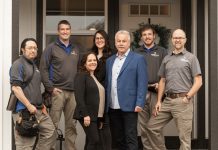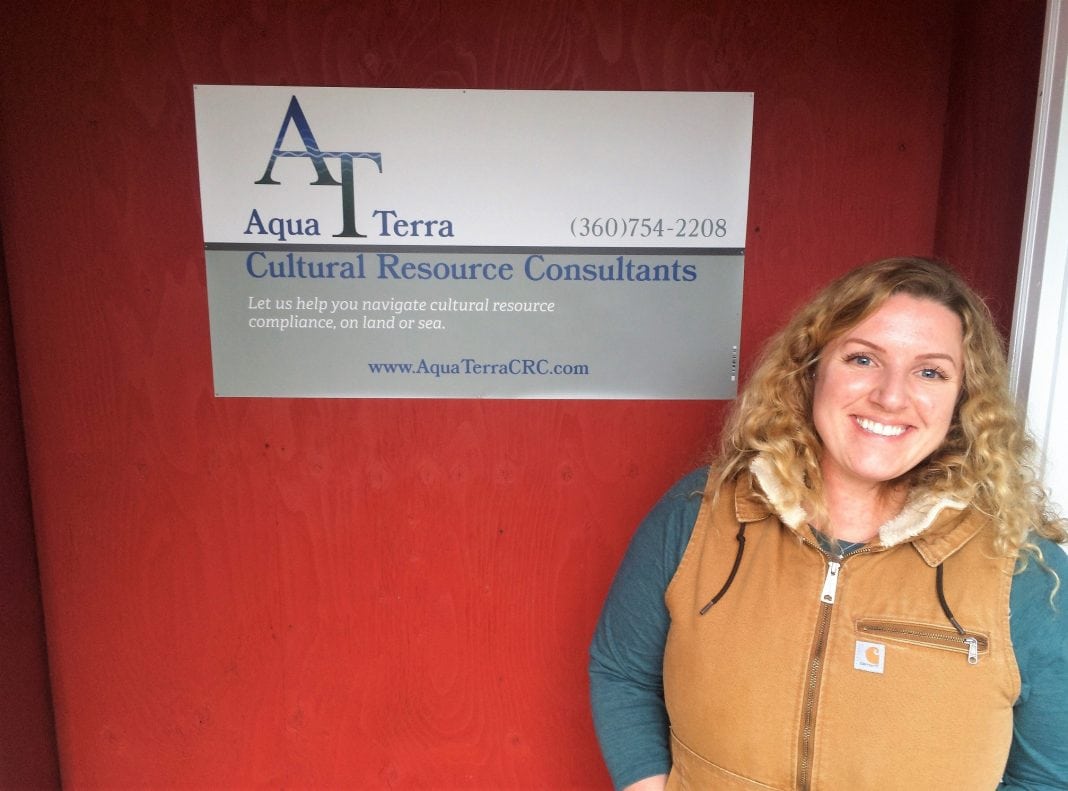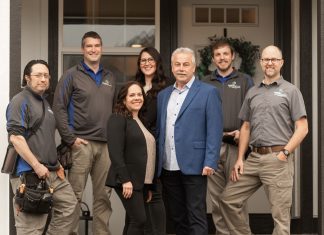For property owners looking to improve their land, constructing an outbuilding or digging a well is a great way to increase the value and improve the property. For many improvements, permits must be submitted through the county. Development within Washington State can be complex. Once the materials have been gathered and permits have been submitted, property owners may be eager to begin the work. Being informed, by the county, that the site falls under State Environmental Policy Act guidelines and will need a cultural resource review before work begins can be a shock.
“Property owners are often confused and frustrated,” says Sarah Amell, owner of Aqua Terra Cultural Resource Consultants. The revelation that more must be done before they can begin whatever project they had planned out leads many property owners to seek out her services. Amell explains that her clients are often confused about the “new requirements” that they must comply with to develop their property. However, many are unaware that these regulations are nothing new, which usually leaves the owners more confused than before.
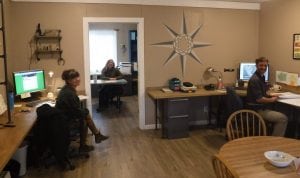
Adopted in Washington State in 1971, the State Environmental Policy Act is known more commonly as SEPA. The goal of SEPA is to help state and local agencies identify and protect areas where development might pose a concern for environmental health. SEPA also works to help agencies make decisions during the permitting process regarding the cultural impact of an area. Most of Amell’s clients are surprised when they first hear about the SEPA review process, although it has been around for almost 50 years.
Advances in technology and data collection and distribution have allowed local agencies, like county employees that issue permits, to assess whether a cultural resource review may be needed. Local agencies are now able to utilize a database that maps out the project area and indicates the potential to find culturally significant artifacts. The agency then makes a determination whether a review is needed before the permit can be approved. If a cultural review is needed, Aqua Terra is there to help. As a result, more property owners find that a SEPA review is indicated for the property they wish to develop to ensure the protection of culturally significant artifacts.
Amell first consults with the private property owner and affiliated tribes. Then she puts together the project background historical research, field survey and technical report, which must be prepared in compliance with Department of Archaeology and Historic Preservation(DAHP) requirements.
Significant items can be prehistoric, or more recent, even within the last century. Culturally significant materials can be found above or below ground. Amell and her team use a number of tools that help them evaluate the site to ensure no significant cultural artifacts are present. They go to the site and do hand shovel tests, using shaker screens to look for cultural materials which could include remnants of firepits, tools or other indications of historic activity on the site. Then a technical report is prepared that includes cultural resource recommendations and the results of the study.
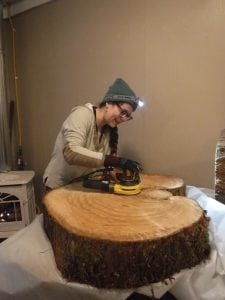
Oftentimes when cultural resource material is discovered, it makes up only a small portion of the site. Amell and her team can help make guidance plan recommendations or provide a plan to protect an unexpected discovery if it arises during construction.
On occasion, additional conditions will be required by the DAHP. These requirements vary from case to case. Sometimes it is as simple as avoiding development in sensitive areas, having a cultural resource monitor on site within certain areas during development, or putting a plan in place in the event of an inadvertent discovery.
Cultural resource finds do not automatically limit development, as some property owners may fear. Take the case of a local seafood company that had a site evaluated for construction of fish rearing ponds along a local river. Two cedar trees were identified that had been traditionally peeled of bark at some point in their growth history by a local Native American tribe.
ATCRC assisted the property owner in coming up with a plan. They worked with the state and tribe and it was agreed that one tree would remain standing, as it could be worked around, but the other tree would be removed.
In order to preserve cultural history, Amell and her team worked with the company to document, record data, photograph and detail the significance of the tree. Sections of the tree were removed to determine the age of the tree and when the bark had been peeled. The slice was presented to the tribe’s cultural center and the remaining wood from the tree was returned to the tribe for use by tribal members. In cases like this, sometimes wood from harvested trees that have cultural significance may be used for carving, for building, for heating homes of elders or for other uses as the tribe sees fit.
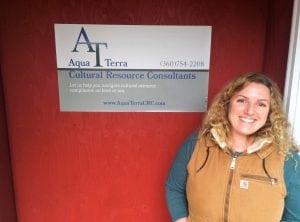
Amell stresses that SEPA compliance isn’t just about bureaucratic red tape. Rather, it is a system of standards set in place in our state that protects cultural resource heritage by minimizing impacts by property development. These standards provide an opportunity for everyone to benefit from the preservation and documentation of these small pieces of shared history, which may be in unexpected places all around us, hidden from the untrained eye. Without SEPA review, valuable cultural artifacts could be lost forever.
The Aqua Terra team understands the complicated regulations so they can assist their clients maneuvering through the SEPA compliance process. They possess the skill and experience in documenting, evaluating and reviewing sites for potential cultural artifacts. Great working relationships with government agencies and local tribes benefit Amell and her team, and allows them to navigate the process for their clients to ensure a positive outcome for all parties involved.
Sarah Amell and her team at Aqua Terra can be contacted online. You can also follow their Facebook page to see more photos of the Aqua Terra team in action.
Sponsored

